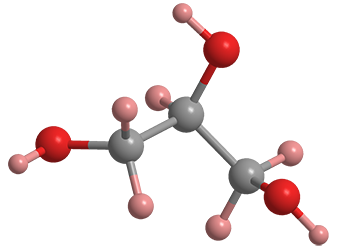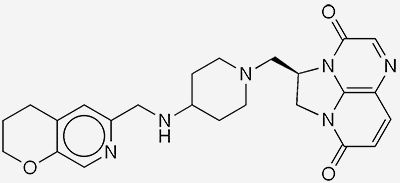What molecule am I?


Glycerol is the simplest alkane triol. It was historically called glycerine (or glycerin), but that name is misleading because the -ine suffix denotes an amine, not an alcohol.
Pioneering Swedish chemist Carl Wilhelm Scheele reported the discovery of glycerol in a 1783 article titled “Findings concerning a particular sweet substance in expressed oils and fatty substances”. In doing so, he established that glycerol is sweet-tasting and that it is the alcohol portion of natural mono-, di-, and triglyceride esters.1
Glycerol/glycerine/glycerin appears in some 330,000 references listed in Chemical Abstracts Service’s SciFindern. The earliest citations are from 1878, in an article titled “A new test for glycerin” and in patents titled “Manufacture of pigments” and “Frees lime saccharate from salts and coloring matters”.
Glycerol can be synthesized from propylene through intermediates such as epichlorohydrin, acrolein, or propylene oxide. But for economic reasons, almost all commercial glycerol comes from hydrolyzing glycerides in natural fats, especially since the advent of using fatty acids to make biodiesel fuels. Some now-inexpensive glycerol is used as a raw material for producing epichlorohydrin and acrolein.
Glycerol has myriad uses in foods, pharmaceuticals, personal-care products, antifreezes, inks, lubricants, industrial lubricants, and many more. It is a key starting material for preparing nitroglycerol2. As long ago as 1945, a book by Georgia Leffingwell and Milton A. Lesser titled Glycerin, Its Industrial and Commercial Applications listed 1583 specific uses3 of the compound.
Finally, glycerol is the base ingredient in commonly used face paints, as described in the facepaint.com blog. It is the medium in which the paint pigments are dispersed. If you paint your face for Halloween, Mardi Gras, or your favorite team’s game, give a shout-out for glycerol.
1. Similarly to the preference for glycerol over glycerine, one might conjecture that glycerides should be called “glycerates” to conform with ester nomenclature.—Ed.
2. CAS Reg. No. 55-63-0.
3. The last four uses in the list are: 1580, poison gas indicators; 1581, skin protection against mustard gas; 1582, tattoo mark removal; and 1583, telephone mouthpiece.
Glycerol hazard information
| Hazard class* | GHS code and hazard statement |
|---|---|
| Not a hazardous substance or mixture** |
*Globally Harmonized System (GHS) of Classification and Labeling of Chemicals.
**Most safety data sheets give this designation; but at least one reports “causes eye irritation”.
Gepotidacin1 is a topoisomerase type II inhibitor that is being studied for treating multiple diseases. It was first reported in world patent application WO/2008/128942 by GlaxoSmithKline (GSK, London), which claimed gepotidacin and similar compounds as antibacterial agents.

This past February, Florian Wagenlehner at Justus Liebig University Giessen (Germany) and colleagues at several institutions, including GSK, found that gepotidacin compared favorably with an older drug, nitrofurantoin2, for treating uncomplicated urinary tract infection3. Then, in March, GSK announced that gepotidacin was likewise successful in a phase 3 clinical study against uncomplicated gonorrhea and could supplant an existing two-drug antibiotic treatment.
1. CAS Reg. No. 1075236-89-3.
2. CAS Reg. No. 67-20-9.
3. GSK has since applied for US Food and Drug Administration approval for this use.
Molecule of the Future
Once a month we bring you a newly discovered or developed molecule that has important implications for the future of chemistry or society in general. Look for it the third week of each month. Learn more about this month's Molecule of the Future below.
We're looking for more molecules of the future!
Do you have a suggestion for the next molecule of the future? Send your idea to MOTW.
This molecule was suggested by a reader. We present almost all of the molecules suggested by our readers. If you have a molecule you would like us to consider, please send us a message. And thank you for your interest in Molecule of the Week! —Ed.
Glycerol fast facts
| CAS Reg. No. | 56-81-5 |
| SciFindern name | 1,2,3-Propanetriol |
| Empirical formula | C3H8O3 |
| Molar mass | 92.09 g/mol |
| Appearance | Colorless viscous liquid |
| Boiling point | 290 °C |
| Water solubility | Miscible |

Learn more about this molecule from CAS, the most authoritative and comprehensive source for chemical information.
Molecule of the Week needs your suggestions!
If your favorite molecule is not in our archive, please send us a message. The molecule can be notable for its current or historical importance or for any quirky reason. Thank you!
Stay Ahead of the Chemistry Curve
Learn how ACS can help you stay ahead in the world of chemistry.

